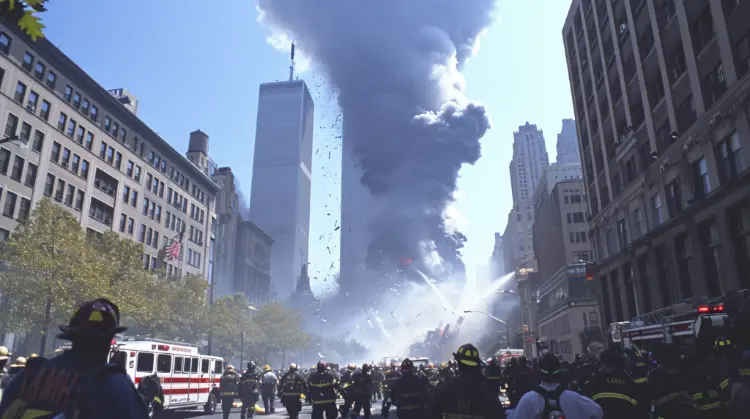On the morning of September 11, 2001, the United States experienced one of the most devastating terrorist attacks in history. As the nation tuned into their usual morning routines, news of a catastrophic event at the World Trade Center in New York City began to unfold. An airplane had struck one of the iconic Twin Towers, followed by a second plane hitting the other tower, leading to a series of tragic events that would forever change the course of history.

On that fateful morning, as millions watched in disbelief, two hijacked planes crashed into the North and South Towers of the World Trade Center, causing massive explosions and fires. The impact and subsequent collapse of the towers resulted in the loss of 2,753 lives, including those of firefighters and law enforcement officers who rushed to the scene to help (National September 11 Memorial & Museum).
Simultaneously, another hijacked plane targeted the Pentagon, the headquarters of the United States Department of Defense, located in Arlington, Virginia. The attack led to the deaths of 184 individuals, both in the plane and within the Pentagon structure (Department of Defense).
A fourth plane, United Airlines Flight 93, crashed into a field in Pennsylvania after passengers and crew bravely fought the hijackers. Their actions prevented the aircraft from reaching its intended target, believed to be the White House or the U.S. Capitol, saving countless lives at the cost of their own (Flight 93 National Memorial).
Terrorism is the calculated use of violence or the threat of violence to instill fear and achieve political, religious, or ideological goals. The 9/11 attacks were orchestrated by the extremist group al-Qaeda, led by Osama bin Laden, and were a stark demonstration of the lengths to which terrorists will go to further their agenda.
In the wake of the attacks, the United States and its allies launched the War on Terror, aiming to dismantle terrorist organizations and prevent future attacks. This led to military interventions in Afghanistan and Iraq, and a global effort to enhance security measures and intelligence sharing.
The site of the World Trade Center has since been transformed into a place of remembrance and resilience. The National September 11 Memorial & Museum now stands as a tribute to the victims and a testament to the spirit of unity and strength that emerged following the tragedy.
The fight against terrorism continues to be a complex and evolving challenge. It requires a multifaceted approach that includes military action, intelligence operations, diplomatic efforts, and the promotion of human rights and democratic values to address the root causes of extremism.
September 11, 2001, remains a day of infamy, a reminder of the fragility of life and the importance of vigilance in the face of threats to peace and security. It is a day to honor the memory of those lost and to reaffirm our commitment to a world free from the scourge of terrorism.

The In's and Out's of Pre-Owned Domain Names
I don't know about you, but ... it seems like all of the best domain names have already been taken. On more than one ... I've come up with a great domain name for a site, only to find that
Why use multiple domain names?
It's quite common for a site to be ... by more than one domain name. In fact, most sites are ... by at least two: a www version and a non-www version. These are usually set up to referen
Google And Duplicate Content
I've been ... the ... about Google and mirrored ... for some time. It is "common ... that Google ... page rank when it ... that content is ... ...